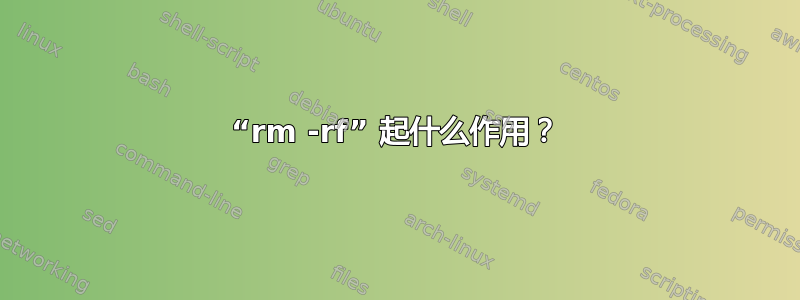
我见过 rm -r、rm -f 和 rm 命令。我想知道 rm -rf 是做什么的,我找遍了所有地方,似乎找不到答案
答案1
答案2
它会删除东西...rm 是删除...所以不要使用它,特别是当你在根目录中时,一定要小心:备份是好的,正确使用时它非常有用...
答案3
您应该使用“command --help”来获取有关任何命令的更多信息,其中本例中的命令是 rm
例如 rm --help
$ rm --help Usage: rm [OPTION]... [FILE]... Remove (unlink) the FILE(s).
-f, --force ignore nonexistent files and arguments, never prompt -i prompt before every removal -I prompt once before removing more than three files, or when removing recursively; less intrusive than -i, while still giving protection against most mistakes --interactive[=WHEN] prompt according to WHEN: never, once (-I), or always (-i); without WHEN, prompt always --one-file-system when removing a hierarchy recursively, skip any directory that is on a file system different from that of the corresponding command line argument --no-preserve-root do not treat '/' specially --preserve-root do not remove '/' (default) -r, -R, --recursive remove directories and their contents recursively -d, --dir remove empty directories -v, --verbose explain what is being done --help display this help and exit --version output version information and exit
By default, rm does not remove directories. Use the --recursive (-r or -R) option to remove each listed directory, too, along with all of its contents.
To remove a file whose name starts with a '-', for example '-foo', use one of these commands: rm -- -foo
rm ./-foo
Note that if you use rm to remove a file, it might be possible to recover some of its contents, given sufficient expertise and/or time. For greater assurance that the contents are truly unrecoverable, consider using shred.
GNU coreutils online help: http://www.gnu.org/software/coreutils/
Full documentation at: http://www.gnu.org/software/coreutils/rm
or available locally via: info '(coreutils) rm invocation'


